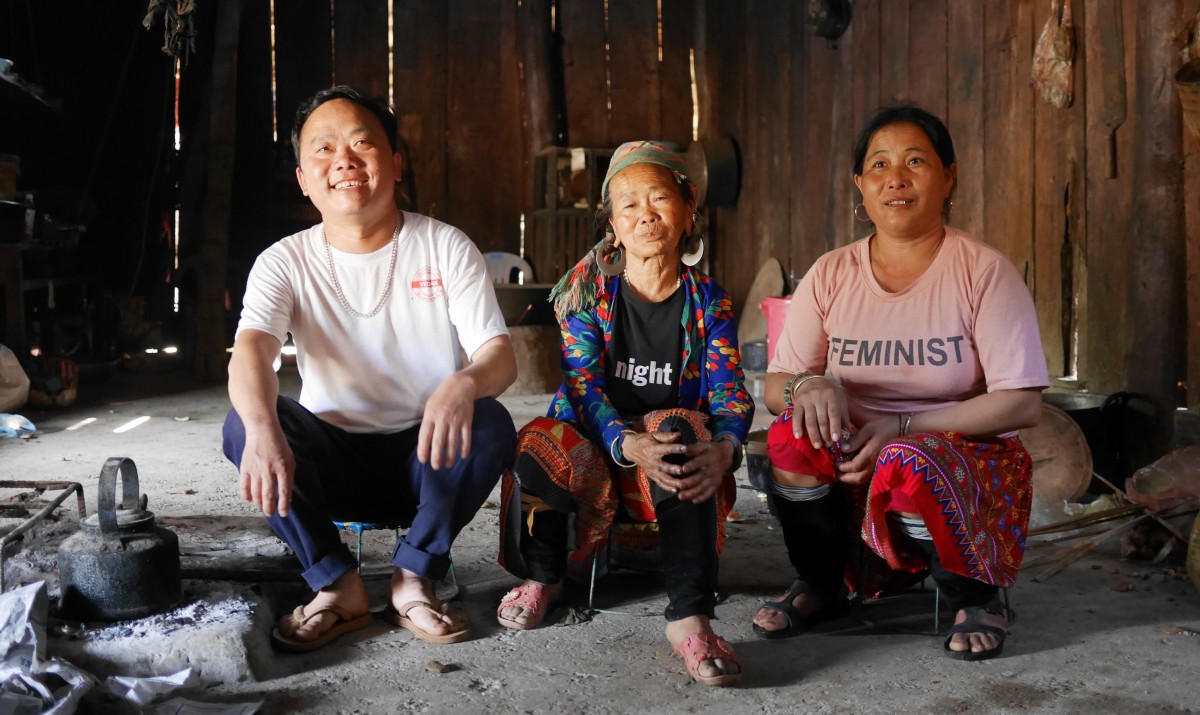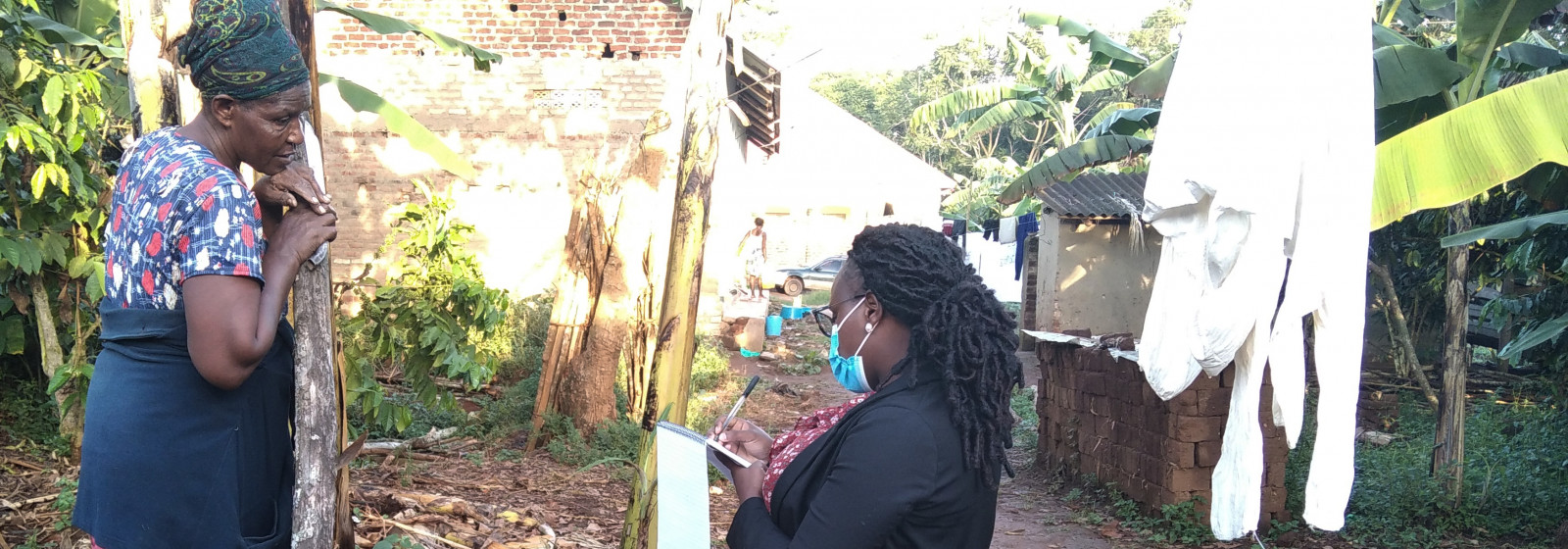Irene Kizito and her husband are subsistence farmers in Kijjabwemi, a small town in southern Uganda. COVID-19 is making life harder. “We are still struggling to get food to eat,” says Kizito, who is 62. Some days, they don’t eat at all.
The disruptions caused by the pandemic have meant that Kizito and her husband can no longer get casual work, and the prices they get for their crops have fallen. At the same time, the cost of basic staples has gone up. The only way the couple have been able to buy food, medicine and necessities is to sell their livestock, but the prices for animals are low, too.
In the second half of 2020, researchers at the International Livestock Research Institute, in partnership with One Acre Fund, interviewed more than 9000 smallholders like Kizito in nine countries: Uganda, Kenya, Burundi, Zambia, Rwanda, Tanzania, Ethiopia, Burkina Faso and Vietnam. They wanted to find out how the COVID-19 pandemic and associated containment measures — the shutdowns, mobility restrictions, and market disruptions — have affected small food producers in low-income countries.
They found that across the board, around a half of the households they interviewed had lost income because of the pandemic. A third had lost half or more. “For people who earn just a few dollars a day, losing 50 or 75 percent of their income is pretty tough to deal with,” says ILRI’s Jim Hammond, who led the study.
In Rwanda, 40 percent of the households interviewed reported severe impacts on their ability to purchase food. In both Rwanda and Uganda, 35 percent reported severe impacts on their off-farm income. In Vietnam, 35 percent of people said they had less food to eat, while half had to reduce the diversity of the food they ate.
“In rich countries, we talk about the trade-off between preventing the spread of the coronavirus and the economy — but in low income countries, the economic impacts are much more severe: people with no safety net are losing their incomes, having to eat less food and getting into debt.”
Volatile markets
While Vietnam has had few cases of the virus, smallholders there report that the strict containment measures have affected their incomes.
“The worst was that markets were closed,” says Sabine Douxchamps, an Alliance Bioversity-CIAT researcher who helped conduct the surveys in Vietnam. “People weren’t able to sell their products.”
But life has still been difficult even after restrictions eased.
27-year-old Lò Thị Khuyên lives with her parents, husband and daughter in Oi village in the northwest of the country. The family has ten pigs, two cows, and a two-hectare plot of mango, plum, and longan trees. Since the pandemic, the fruit has been rotting on the ground, Khuyên says, because the family can no longer find a buyer. Buying feed for the pigs has become more expensive, while the price the fattened animals fetch at market has dropped by a third.

“We've seen that in all the seven countries where we've done this work,” says Hammond. “It’s the same pattern everywhere.” Across the board, the prices farmers are getting for their produce — whether livestock, grains, fruit, or vegetables — have fallen. But at the same time, it is costing them more to buy food for their own families.
So far, it’s not clear why that’s happening, meaning more research is needed. It could be that amidst the uncertainty, small traders are also facing challenges, risks, and unpredictable costs - “they don’t have much of a safety net, either.”
In the meantime, Hammond says, governments could look at introducing policy measures aimed at stabilizing prices, such as a short-term price guarantee scheme for sales of agricultural produce.
Living savings
Despite the low prices, Khuyên’s family sold 5 pigs last May and June. It was the only way to pay for needed household expenses.
The survey showed that selling livestock was a common survival strategy for smallholder families, says Douxchamps. “People use livestock as a kind of living saving.”
Across the survey countries, people turned to their livestock in hard times, says Hammond. “What we saw in late 2020 was that people were cashing in their assets.” Like Kizito and Khuyên, they were selling off their animals, or selling stored crops they had been planning to eat later in the year. “They were buffering the shock so that they could continue to keep their household economies afloat,” says Hammond.
In Rwanda, 45 percent of families interviewed said they had sold livestock in order to cope, while in Vietnam 38 percent said they had eaten their livestock.
Most families didn’t have to sell or eat all their animals. “You spend the chickens before you spend the goats and spend the goats before you spend the buffalo or the cattle,” says Hammond. “In most cases, people weren't selling their cattle, which implies that they're not reaching desperation level.” However, there is some emerging and concerning evidence from Burkina Faso: a small survey of 100 households found that some people have begun selling their cattle.
That buffering can only continue for so long, Hammond says. People who have used their savings — living or otherwise — will have less resilience to future shocks, or to pandemic-related disruptions if they continue well into 2021. (The World Bank estimated that an additional 88-115 million people were pushed into extreme poverty during 2020.)
Collectively, the pandemic could also permanently alter food production systems, Hammond says. More than 75 percent of most food commodities in Sub-Saharan Africa, Southeast Asia, South Asia, and China are produced on farms smaller than 20 hectares.
If these smallholder farmers change their strategies — for example to sell less food at market and produce just for their own household — that could reduce the national food supply, says Hammond. “And some of the progress in building up that whole food system infrastructure could be set back.”
Variable vulnerability
Lý A Trống, 43, lives in the remote Vietnamese village of Buôm Khoang with his mother, wife and children. The family owns a few livestock — cattle, pigs, goats and one buffalo — and has a small garden of maize and rice. But because they are mainly subsistence farmers, they were less affected by the market disruptions. Trống has continued to feed his livestock with home-grown maize and grass the family collected. When they ran out of rice, he travelled 30 kilometers to the market to buy some (it was more expensive than usual.)
But for Trống, the biggest imposition of the pandemic was being separated from two of his daughters who work in a distant factory and could not visit home because of the mobility restrictions.

Within countries, the survey showed that the people who have been most affected by the COVID-19 disruptions were those who researchers would have previously considered less vulnerable: farmers who diversified by having some off-farm income and good market access, says Mark van Wijk, another ILRI researcher involved in the project. Because those strategies were most affected by the pandemic, they are now comparably worse off than subsistence farmers with few market links, like Trống.
“So the hardest hit are actually the ones we would normally have identified as, relatively speaking, the least vulnerable.”
Facing up to trade-offs
While some of the people interviewed said they had received free facemasks and soap, almost none had access to any kind of financial or food aid from either the government or NGOs, says Hammond.
“It kind of exemplifies that it’s in everybody's minds to stop the virus, rather than worry about the food security impacts on households.”
Those trade-offs need to be more openly discussed, the researchers say.
“The countries that have been praised as having an excellent public health response to COVID-19 were also the countries where we saw the most serious food insecurity impacts on the farmers,” says Hammond. Meanwhile, countries with more lax restrictions like Burundi and Tanzania – whose government denies the disease is in the country at all and has no known testing program -- have seen less severe economic impacts.
That doesn’t mean countries shouldn’t try to reduce the spread of the virus, Hammond cautions. Some studies indicate that there may have been millions of undiagnosed COVID-19 cases in Kenya alone, and without measures to control the virus more dangerous new variants could evolve.
But Hammond says that if stringent restrictions are imposed, targeted support measures for smallholders need to go hand in hand.
In the meantime, the pandemic has convinced Khuyên that livestock are a useful asset in uncertain times. “I want to raise more livestock,” she says. “Ripe mangos and plums will drop, but the animals will just get bigger.”
Special thanks to Tu Mai, Sabine Douxchamps of Alliance Bioversity-CIAT and Shakira Naggujja of the International Livestock Research Institute for their contributions to this story.
--
The COVID-19 surveys were designed and implemented as part of the Rural Household Multi-Indicator Survey (RHoMIS). Read more about the surveys:
- Outcome story: Big insights from big data (Nov 2020)
- Journal article in Nature: The Rural Household Multiple Indicator Survey, data from 13,310 farm households in 21 countries (11 Feb 2020)
- Paper: The Rural Household Multi-Indicator Survey (RHoMIS) for rapid characterisation of households to inform climate smart agriculture interventions (Feb 2017)
